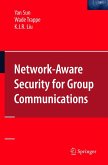The vision of a world in which privacy persists and security is ensured but the full potential of the technology is nevertheless tapped guides this work. It is argued that security and privacy can be ensured using technical safeguards if the whole RFID system is designed properly. The challenge is immense since many constraints exist for providing security and privacy in RFID systems: technically and economically but also ethically and socially. Not only security and privacy needs to be provided but the solutions also need to be inexpensive, practical, reliable, scalable, flexible, inter-organizational, and lasting.
After analyzing the problem area in detail, this work introduces a number of new concepts and protocols that provide security and ensure privacy in RFID systems by technical means. The classic RFID model is extended and considerations in new directions are taken. This leads to innovative solutions with advantageous characteristics. Finally, a comprehensive framework including required protocols for operation is proposed. It can be used within a global scope, supports inter-organizational cooperation and data sharing, and adheres to all the architectural guidelines derived in this work. Security and privacy is provided by technical means in an economic manner. Altogether, the goal of building scalable and efficient RFID systems on a global, inter-organizational scale without neglecting security and privacy has been achieved well.
In the beginning of 2003, I found a short article about the privacy implications of RFID technology in a newspaper. It raised my interest, and after reading some early research papers on the topic, I thought: "There must exist better solutions. " I c- cerned myself with the topic in my spare time. After having developed my rst - lutions, I asked my supervisor, Prof. Dr. Paul Muller ¨ , whether I could write a paper about my results. As the topic did not t into any running project or at least the overall research directions of his group, he could have answered no. But instead, he encouraged me to do it. The paper became a success, and many other papers about new concepts and solutions followed. Now the answer is obvious: There exist better solutions. I have dealt with the topic over the past years. Now I want to share the basics as well as current research results with the reader. This book is surely not a bedside reading. But with all the presented concepts, it can broaden the mind of the reader concerning security,privacy, and RFIDsystems. Iwishthe reader many new insights. There are many people I would like to thank. First of all, my thanks go to my ¨ supervisor, Prof. Dr. Paul Muller. He gave me room for creativity and plenty of rope to work on my own.
After analyzing the problem area in detail, this work introduces a number of new concepts and protocols that provide security and ensure privacy in RFID systems by technical means. The classic RFID model is extended and considerations in new directions are taken. This leads to innovative solutions with advantageous characteristics. Finally, a comprehensive framework including required protocols for operation is proposed. It can be used within a global scope, supports inter-organizational cooperation and data sharing, and adheres to all the architectural guidelines derived in this work. Security and privacy is provided by technical means in an economic manner. Altogether, the goal of building scalable and efficient RFID systems on a global, inter-organizational scale without neglecting security and privacy has been achieved well.
In the beginning of 2003, I found a short article about the privacy implications of RFID technology in a newspaper. It raised my interest, and after reading some early research papers on the topic, I thought: "There must exist better solutions. " I c- cerned myself with the topic in my spare time. After having developed my rst - lutions, I asked my supervisor, Prof. Dr. Paul Muller ¨ , whether I could write a paper about my results. As the topic did not t into any running project or at least the overall research directions of his group, he could have answered no. But instead, he encouraged me to do it. The paper became a success, and many other papers about new concepts and solutions followed. Now the answer is obvious: There exist better solutions. I have dealt with the topic over the past years. Now I want to share the basics as well as current research results with the reader. This book is surely not a bedside reading. But with all the presented concepts, it can broaden the mind of the reader concerning security,privacy, and RFIDsystems. Iwishthe reader many new insights. There are many people I would like to thank. First of all, my thanks go to my ¨ supervisor, Prof. Dr. Paul Muller. He gave me room for creativity and plenty of rope to work on my own.








